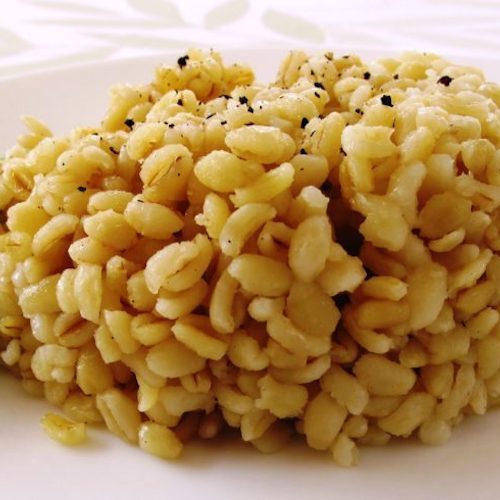There are many variations of making a bulgur pilaf. This is the most plain and the simple one. Bulgur can also be used in soups, pilaf, lentil balls, salads, you name it. A perfect filling side dish to any type of main course. You can even have it together with a scoop yogurt or salad and call it a meal.
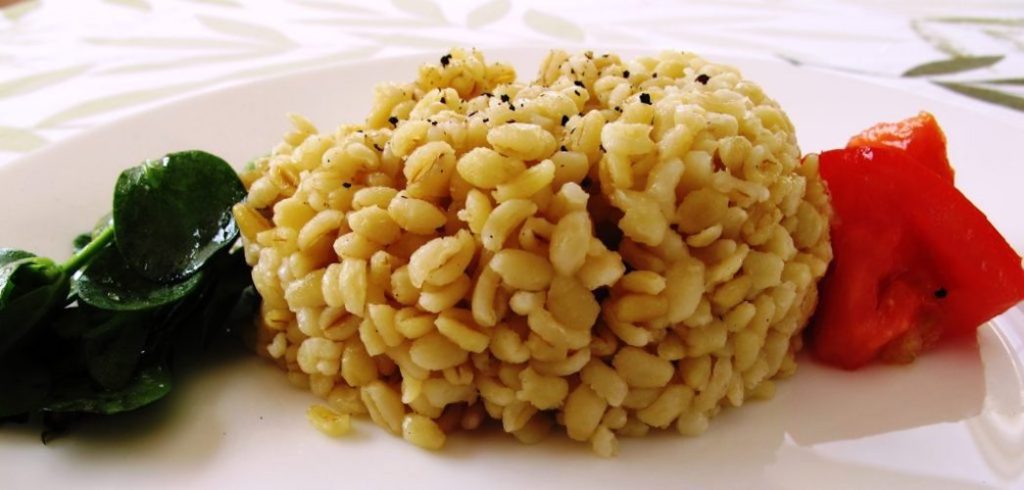
What is Bulgur?
Bulgur is a type of whole wheat grain that has been cracked and partially pre-cooked. It is a common ingredient in Middle Eastern, Mediterranean, and North African cuisine. To produce bulgur, wheat kernels are boiled, dried, and then cracked into smaller pieces. The different sizes of bulgur, ranging from fine to coarse, are determined by the degree of cracking.
Bulgur is a nutritious food, rich in fiber, protein, vitamins, and minerals. It is often used as a base for salads, pilafs, and stuffing, or cooked into soups and stews. It has a nutty flavor and a chewy texture, making it a versatile ingredient in various dishes. Additionally, bulgur is relatively quick and easy to cook, requiring only a short cooking time compared to whole grains like brown rice or barley.
You will notice several different types of bulgur in the markets. There is the fine bulgur, which is used in soups, in making meat or lentil balls. Then there is the coarse bulgur which is used more often for pilafs. Then there is the large coarse bulgur for pilafs too. I prefer the large coarse bulgur. It requires more water to cook or you can choose to have it “al dente” as in pasta. This recipe is “al dente” so you might choose to add 1/4 cup water more to have it well done. Try and decide on your preferences.
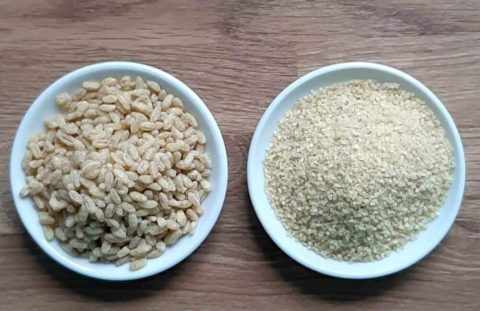
What is Bulgur called?
In English, the term “bulgur” is commonly used and widely recognized internationally. In other languages, it may be known by different names:
- Turkish: Bulgur
- Arabic: برغل (burghul)
- Georgian: ბულგური (bulguri)
- Persian: بلغور (bulgur)
- Albanian: Bulguri
- Croatian: Bulgur
- Bosnian: Bulgur
- Romanian: Bulgur
- Bulgarian: Булгур (bulgur)
These are just a few examples, and the name may vary depending on the specific region and language. Is Bulgur better than Rice?
Both bulgur and rice have their pluses and negatives.
Bulgur has gluten, although not too much. Bulgur is more nutritious with more folate and fiber. Bulgur has less carbs and calories than rice.
Rice is gluten-free. Rice is a good source of carbs and easily digestible.
Tips about making a delicious bulgur pilaf
The cup of bulgur refers to any type/size of cup. It doesn’t have to be a measuring cup. Just make sure to add 1.5 cup of boiling water to 1 cup of bulgur.
You do not need to rinse the bulgur before cooking as it not starchy as rice is.
Make sure the water you are adding is boiling. Do not add cold water to the bulgur when cooking. Cook over high heat to bring the water to boil again. When the water is at rolling boil reduce the heat and let the bulgur simmer.
When the water is completely absorbed by the bulgur taste a few. If it cooked close the heat. If not add 1-2 tablespoons of boiling water and continue cooking for a couple of minutes longe.
Should bulgur be soaked before cooking? No bulgur doesn’t need to be soaked in water to make bulgur pilaf.
What to serve with bulgur pilaf
Following is a list of main dishes you can serve bulgur pilaf as a side:
And here is a list of side dishes you can serve bulgur pilaf as a main:
What is Bulgur Pilaf made of?
Basic bulgur pilaf ingredients are kitchen staples, so you do not need to do a special shopping, except perhaps the bulgur itself. Here is the list coarse bulgur, olive oil, butter, garlic cloves, cumin, salt and pepper. You can skip the butter to make it plant based.
Other bulgur recipes
If you like bulgur here are some other recipes with bulgur
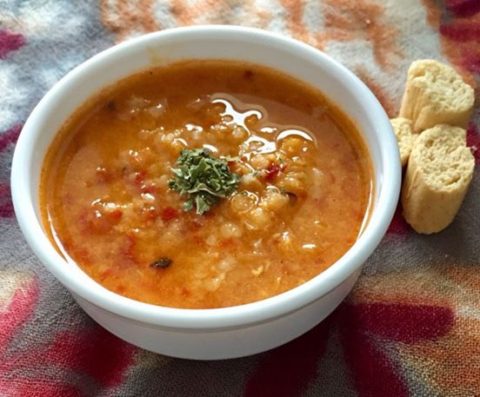
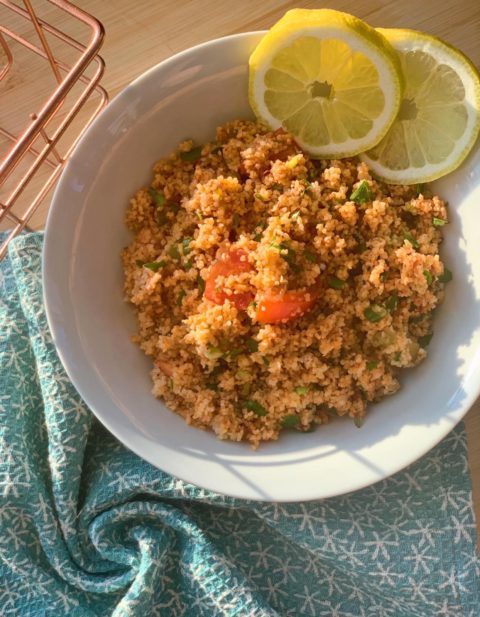
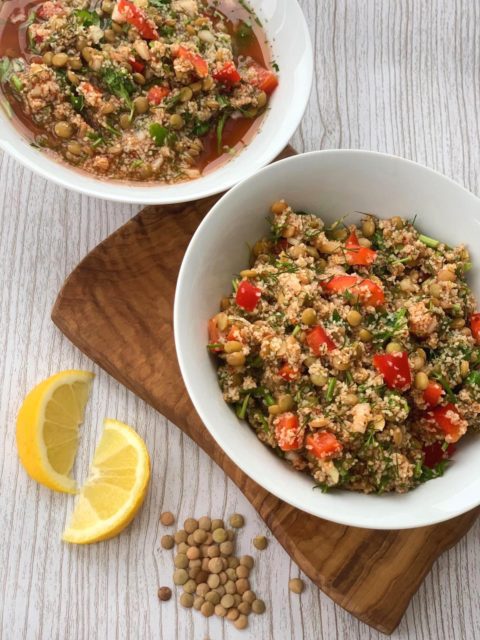
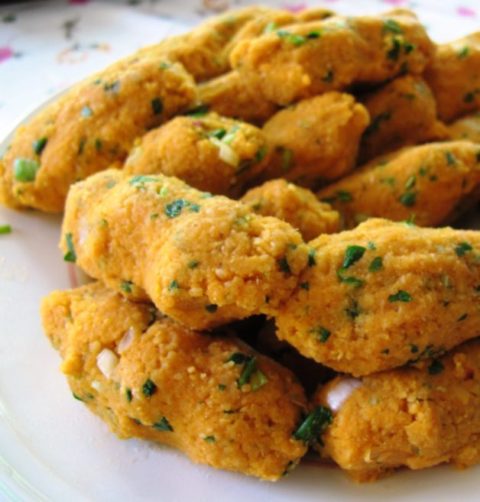
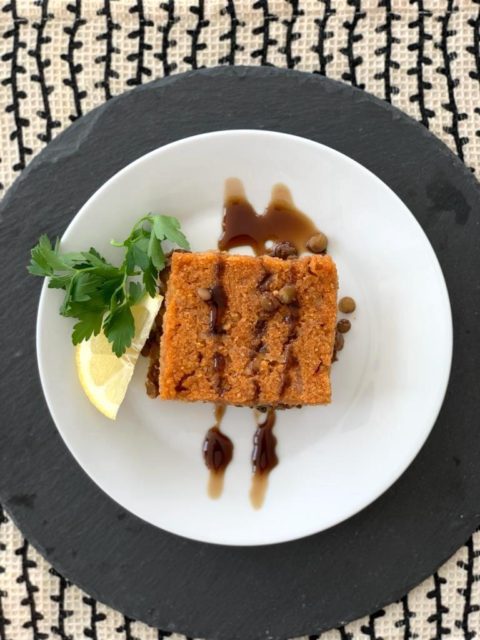
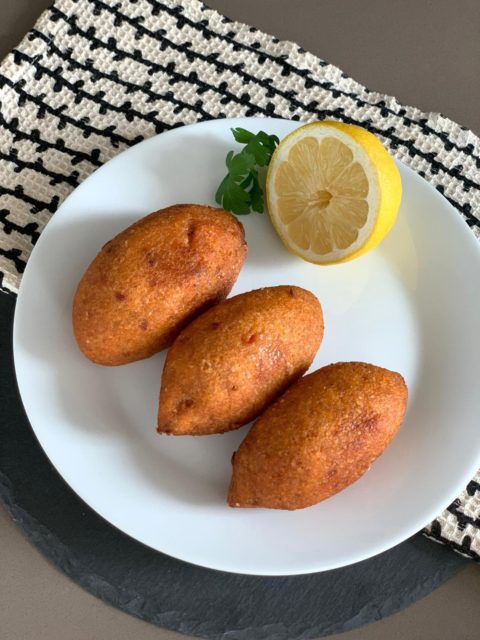
Enjoy.
Bulgur Pilaf
Ingredients
- 1 cup coarse bulgur
- 1 tablespoon olive oil
- 1 tablespoon butter
- 1 bullion chicken stock optional
- 2 garlic cloves chopped
- 1⅔ cup warm water
- ½ pinch black pepper
- ½ cumin
- 1 teaspoon salt
Instructions
- Add the olive oil and butter to a non-stick pot. Melt the butter.
- Add the bulgur, the chicken bullion, spices and the chopped garlic. Adjust the salt according to your taste and according to how salty your chicken bullion is if you are using one.
- Mix until the chicken bullion is dissolved and all the ingredients are well combined.
- Add the warm water. Bring to boil over high heat and then reduce the heat to minimum.
- Cook until water is absorbed. Taste, if bulghur is still not cooked enough, add two tablespoons of boiling water. Cook another minute. Close the heat. Rest for 5 minutes. Serve.
Notes
Interested in more recipes? Subscribe to my newsletter and follow along on Facebook, Pinterest and Instagram for all of the latest updates.
Curious about what tools I have used? Check my shop page.

